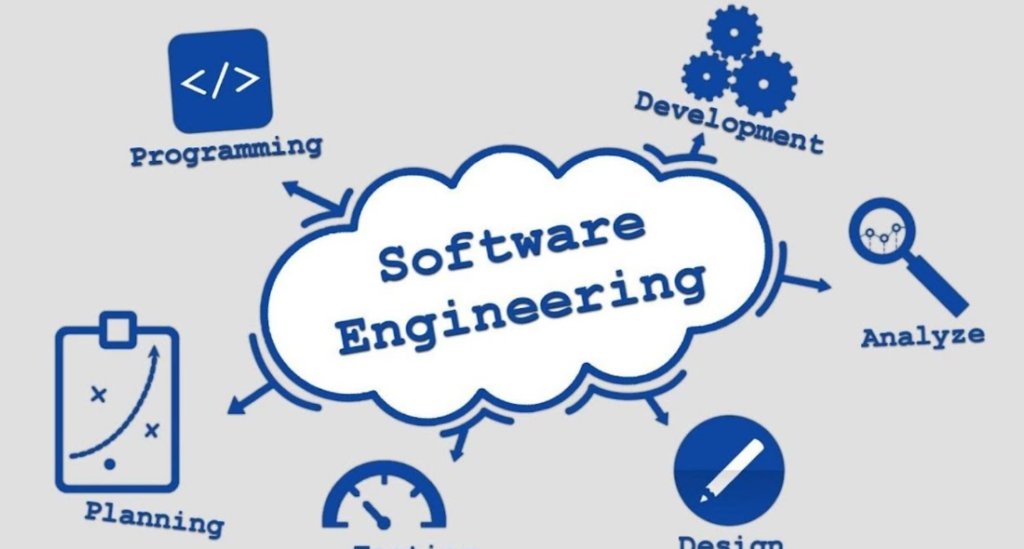Software engineering is a discipline that deals with the design, development, testing, deployment, and maintenance of software systems. It comprises a systematic and planned approach to generating high-quality software solutions that satisfy user expectations and conform with specified requirements. Software engineering comprises numerous concepts, strategies, procedures, and tools that allow the successful design and management of software projects.
The following are essential aspects of software engineering:
Requirements Analysis: Understanding and documenting the expectations of users and stakeholders to establish the software’s functionality and constraints
Design: Creating a plan for the software system, including architecture, modules, data structures, and user interfaces.
Implementation: developing the actual code according to the design criteria. This comprises coding, debugging, and maybe working with a team of developers.
Testing: Thoroughly evaluating the program to detect and remedy errors, ensuring it operates as intended and fulfills the defined standards.
Deployment: releasing the program for users to access and use. This might need installation, setup, and interface with other systems.
Maintenance: regularly updating and improving the program to fix issues, add new features, adapt to changes in the environment, and insure its longevity.

Software engineering also encompasses several techniques, or methodologies, for controlling the software development process. Some typical strategies include:
Waterfall Model: A linear and sequential technique where each phase (requirements, design, implementation, testing, deployment, and maintenance) is achieved before moving on to the next.
Agile Methods: Iterative and incremental strategies that emphasize collaboration, adaptability, and reactivity to changes Scrum and Kanban are examples of agile methodologies.
DevOps is a methodology that integrates software development (Dev) with IT operations (Ops) to enable speedy and continuous software delivery and deployment.
Spiral Model: An iterative technique that combines components of the waterfall model with risk assessment and mitigation at each phase.
Extreme Programming (XP): An strategy focusing on close collaboration between developers and users, frequent releases, and automated testing
Software engineering is vital because it helps assure that software products are produced efficiently, reliably, and in a way that fulfills the needs of users and stakeholders. It also helps tackle issues and barriers that emerge during the development process, ultimately leading to higher-quality software and more successful projects.



